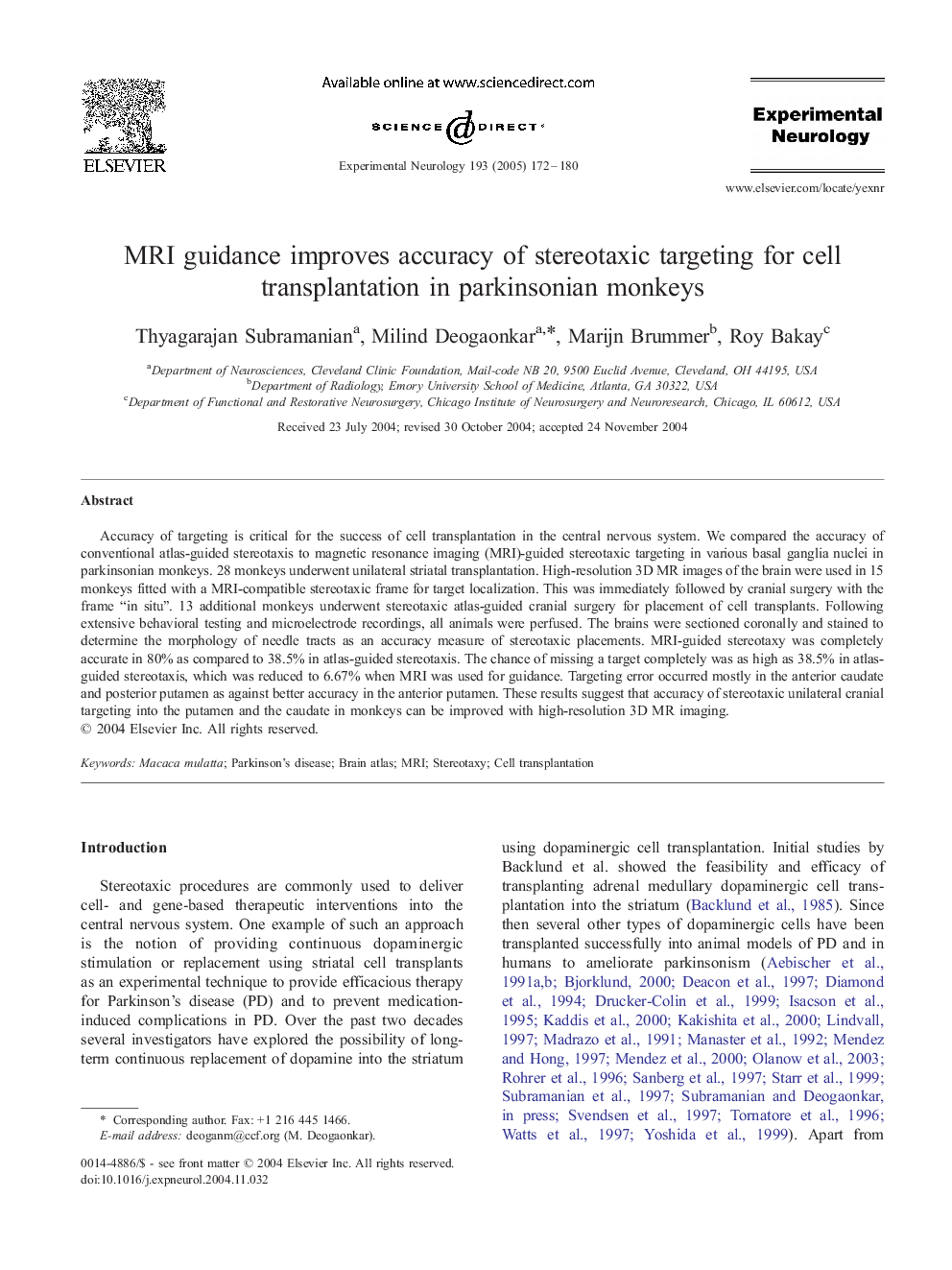| Article ID | Journal | Published Year | Pages | File Type |
|---|---|---|---|---|
| 9192064 | Experimental Neurology | 2005 | 9 Pages |
Abstract
Accuracy of targeting is critical for the success of cell transplantation in the central nervous system. We compared the accuracy of conventional atlas-guided stereotaxis to magnetic resonance imaging (MRI)-guided stereotaxic targeting in various basal ganglia nuclei in parkinsonian monkeys. 28 monkeys underwent unilateral striatal transplantation. High-resolution 3D MR images of the brain were used in 15 monkeys fitted with a MRI-compatible stereotaxic frame for target localization. This was immediately followed by cranial surgery with the frame “in situ”. 13 additional monkeys underwent stereotaxic atlas-guided cranial surgery for placement of cell transplants. Following extensive behavioral testing and microelectrode recordings, all animals were perfused. The brains were sectioned coronally and stained to determine the morphology of needle tracts as an accuracy measure of stereotaxic placements. MRI-guided stereotaxy was completely accurate in 80% as compared to 38.5% in atlas-guided stereotaxis. The chance of missing a target completely was as high as 38.5% in atlas-guided stereotaxis, which was reduced to 6.67% when MRI was used for guidance. Targeting error occurred mostly in the anterior caudate and posterior putamen as against better accuracy in the anterior putamen. These results suggest that accuracy of stereotaxic unilateral cranial targeting into the putamen and the caudate in monkeys can be improved with high-resolution 3D MR imaging.
Related Topics
Life Sciences
Neuroscience
Neurology
Authors
Thyagarajan Subramanian, Milind Deogaonkar, Marijn Brummer, Roy Bakay,
